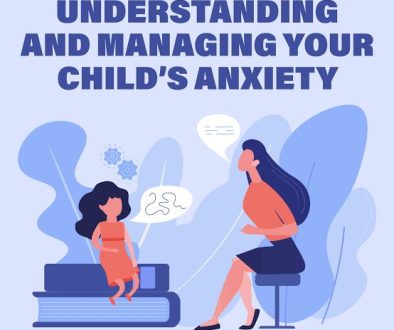Autism Spectrum Disorder (ASD)
Autism Spectrum Disorder (ASD) is a neurodevelopmental disorder characterized by challenges in social interaction, communication, and repetitive behaviors. The term “spectrum” reflects the wide range of symptoms, abilities, and levels of disability that can occur in people with ASD. The disorder affects individuals differently, and while some people with ASD may need significant support in their daily lives, others are highly independent and capable.
The precise causes of ASD are not fully understood, though genetic and environmental factors play a role. Early diagnosis and intervention are essential, as they can significantly improve outcomes and help individuals with ASD develop essential skills.
Understanding Autism Spectrum Disorder
ASD is a lifelong condition that typically becomes evident in early childhood, often by age two or three. While the symptoms and severity vary, they generally fall into three main categories: social challenges, communication difficulties, and repetitive behaviors or restricted interests.
1. Social Challenges: People with ASD often have difficulty understanding social cues, making eye contact, and engaging in back-and-forth conversations. They may appear to be uninterested in or unaware of other people or have trouble forming and maintaining friendships.
2. Communication Difficulties: Communication issues vary widely among people with ASD. Some may have delayed speech or language development, while others may speak fluently but struggle with nuances like humor or sarcasm. In some cases, individuals with ASD may use repetitive or idiosyncratic language.
3. Repetitive Behaviors and Restricted Interests: Many individuals with ASD display repetitive behaviors, such as hand-flapping, rocking, or insistence on routines. They may also have intense, focused interests in particular topics or activities.
Diagnosing Autism Spectrum Disorder
Diagnosing ASD can be challenging due to the variability in symptoms. Clinicians typically rely on developmental screenings and comprehensive evaluations conducted by a team of specialists, including psychologists, neurologists, and speech therapists. The following steps are usually part of the diagnostic process:
1. Developmental Screening: This is often the first step and involves a series of simple questions about a child’s development. Developmental screenings are usually conducted during regular pediatric check-ups.
2. Comprehensive Evaluation: If a screening suggests potential signs of ASD, a full evaluation is conducted. This may include cognitive testing, language assessments, and behavioral observations.
3. Diagnostic Criteria: The criteria for ASD are outlined in the DSM-5 (Diagnostic and Statistical Manual of Mental Disorders), which categorizes the symptoms into social communication challenges and restricted, repetitive patterns of behavior.
Causes and Risk Factors
While the exact causes of ASD are still being researched, it is believed to result from a combination of genetic and environmental factors:
1. Genetics: Studies show that genetic factors contribute significantly to the likelihood of developing ASD. For example, siblings of children with ASD are at a higher risk of developing the disorder. Genetic mutations or changes, often inherited but sometimes spontaneous, can play a role in its development.
2. Environmental Factors: Certain environmental influences, such as prenatal exposure to toxins or infections, are thought to contribute to ASD in combination with genetic predispositions.
3. Parental Age: Advanced parental age, particularly in fathers, has been associated with a slightly increased risk of having a child with ASD. However, this is only one of many factors, and it is neither necessary nor sufficient alone to cause ASD.
Treatment and Support for Autism Spectrum Disorder
There is no known cure for ASD, but a variety of treatments can help manage symptoms and support individuals in reaching their full potential. Treatment plans are usually tailored to the individual’s unique needs and may include:
1. Behavioral and Communication Therapies: Applied Behavioral Analysis (ABA) is one of the most widely used therapies, focusing on reinforcing positive behaviors and reducing problematic ones. Speech therapy and occupational therapy are also common, addressing specific challenges in communication and daily living skills.
2. Educational Interventions: Many children with ASD benefit from specialized education programs that cater to their specific learning needs. Early intervention programs are particularly beneficial, helping young children develop critical social and communication skills.
3. Medications: Although there is no medication to treat ASD itself, certain medications can help manage symptoms like anxiety, hyperactivity, and irritability. Medication is often used in conjunction with other therapies.
4. Social Skills Training: For individuals with mild to moderate ASD, social skills training can help improve interpersonal relationships by teaching communication techniques, emotional regulation, and conflict resolution skills.
Living with Autism Spectrum Disorder
Living with ASD presents both challenges and opportunities for individuals and their families. Many people with ASD have unique strengths, including exceptional memory, attention to detail, and in some cases, advanced abilities in subjects like math or music. These strengths can be harnessed through supportive environments that encourage personal development.
However, the challenges are real and can affect daily life. Individuals with ASD may struggle with sensory sensitivities, such as an aversion to loud noises or bright lights. Social interactions can also be overwhelming, particularly in crowded or unpredictable settings. Support from family, friends, and community resources can make a significant difference in managing these challenges.
Families of individuals with ASD often play a vital role in treatment and support. Raising a child with autism requires patience, understanding, and access to resources. Many families find support groups helpful for connecting with others who understand their experiences and for finding local resources and advice.
Conclusion
Autism Spectrum Disorder is a complex, lifelong condition that affects individuals in unique and varied ways. While the symptoms of ASD can pose significant challenges, early intervention and personalized support can lead to better outcomes. Understanding and acceptance of autism continue to grow, leading to a greater range of resources and opportunities for people with ASD.
Through therapies, community support, and the advocacy of families and professionals, individuals with autism can develop essential skills and lead fulfilling lives. Increased awareness and research on autism spectrum disorder continue to improve our understanding of the condition, offering hope for further advancements in support and treatment.



